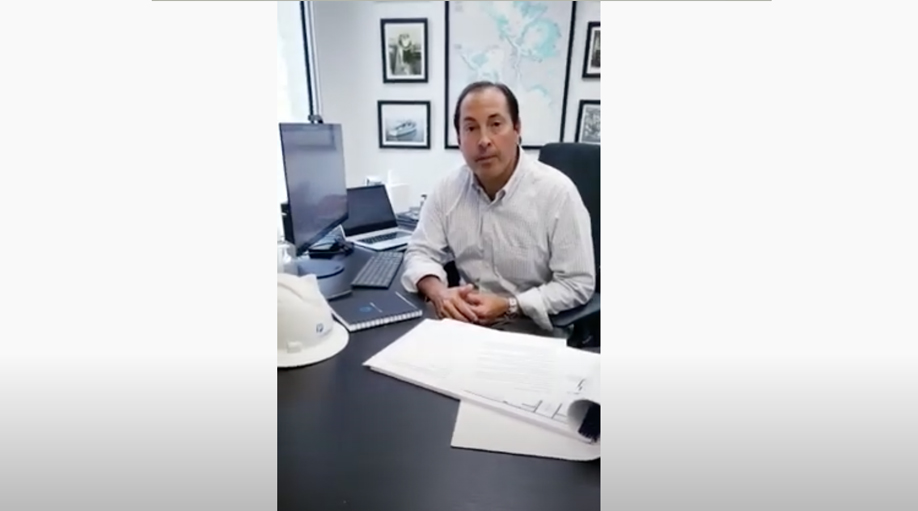Pat, as a highly regarded appraiser in the South Florida market, and as a former CIASF President, we want first to thank you for your time and attention to this much critical topic.
My pleasure; these questions are critical as we work our way through this crisis and hope for a robust rebound. I am glad to share my personal views.
Given the current situation, how are you looking at historical data moving forward? Are comparables from Q1 of this year still relevant?
Data from Q1 is not relevant during this COVID-19 suspension of business activity because that data and those transaction points were likely negotiated before the first quarter, so are not influenced by the pandemic’s effect on values, if any. It is very difficult to say Q1 data points would tell us what a similar property would be worth today, at this moment in time. We are not saying the information is irrelevant, all are considered as data points of information.
How can you establish a comparable in today’s historic environment?
Most banks, with the blessing of the federal regulators, are generally extending existing loans for about 90 days at a time hoping that on the other side of 90 days we will have more clarity in market data and conditions; to a substantial extent, new business is not being written because a new appraisal in an environment where we don’t know how property values are being affected. Refinancings and workouts are the theme of the day. The federal regulators published an April 14th, 2020 “Interagency Statement on Appraisals and Evaluations for Real Estate Related Financial Transactions Affected by the Coronavirus” that gives guidance to financial institutions on what may be done in this current COVID-19 environment.
Will any new deals be considered in this environment?
If any lending institutions are being considered it would be a very “clean” deal – characteristics of the borrower and a property type such as an existing occupied industrial property.
Will the appraisal process requires a ‘reset’ of data points and current pricing to establish value? How do you accomplish this reset and determine estimated values once this crisis subsides?
Financial institutions are hoping that if existing loans are extended for 90-120 days, there will hopefully be some clarity on the effects of the COVID on market conditions and have some additional data. Financial institutions and appraisers will continue to gather anecdotal information on how the COVID-19 crisis will have affected (or not affected) transactions. We certainly know that hotels, retail centers, and restaurants have suffered a substantial impact.
Are there any special disclosures or disclaimers that are required as part of an appraisal that you are tasked with today due to COVID-19?
Appraisers are seeking guidance from trade associations like the Appraisal Institute. Appraisals coming through do include a disclosure about COVID-19. Appraisers, however, are called to give the best judgment given the property type, the recent historical operation of the property, the market area and provide an opinion as to what he or she anticipates. For example, Q1 data may be referenced and analyzed; the next step is to gather and analyze other economic indicators that may influence the property type and opine as to how value may or may not be affected. It is not best practice to develop an opinion of value based on Q1 data and then include a disclaimer. Appraisers need to be talking to active market participants (brokers, property owners) and give their best estimate about a particular property type in this market and what may or may not be affecting value. No one has a crystal ball, especially not now. We are making our way through this one data point and one anecdote at a time.
Are appraisers considered an ‘essential business’ and if so, are inspections still happening in person? If not, will the appraiser be able to conduct virtual inspections (like some municipalities have started doing)?
Financial institutions are essential businesses, so related loans secured by real estate are part of the essential business. The appraisal process is included in federal regulation as the April 14, 2020 statement illustrates. An example from the April 14th statement – financial institutions, their customers and the general public need access to the equity in their homes and commercial properties to get through this trying time. How can a bank facilitate an owner accessing equity? A financial institution will still need to have an appraisal, but the interagency statement says that the appraisal can follow a loan decision so long as the appraisal occurs within 120 days. I spoke to an appraiser this morning who spent his entire 40-year career in banking who has never seen this before. The loan decision must be based on safety and soundness so banks and their internal appraisal and underwriting teams must develop acceptable processes. The credit decision is tied to the collateral value so we are back to how does an appraiser develops a reasonable market value opinion in this unprecedented environment where the economy has been shut down. We are sifting through this. It is worthwhile to note that the Interagency Rule sunsets on December 31, 2020.
What if this borrower wants to refinance at a lower interest rate?
A bank will likely work with a borrower if it has an existing appraisal and there is no new cash out, with the understanding that a new appraisal or evaluation will take place within the 120 day required time period.
What does the lender do if the new appraisal shows that the property value had declined from its prior appraised value?
A lender will need to make decisions using its underwriting criteria on the safety and soundness of the transaction using the existing appraisal. Financial institutions likely do not have the details figured out yet given the April 14th Interagency Rule. Potentially, if an existing loan and the borrower wants to refinance solely to take advantage of lower interest rates the need for the appraisal may be deferred and the decision may be based on referencing the prior appraisal as a guide and updated as necessary and possible. Internally the bank will use its resources to understand the current value of the property and the property’s value going forward. For example, the refinance of an existing loan at an original loan to value ratio is 50% is an easier decision than a loan with an original loan to value ratio of 80%.
How do investment and commercial property differ?
The intent of the federal regulators is to make money available to those in need during this pandemic period; financial institutions need to tie the loan to the value of the property. The financial institution will need to determine the level of risk by property type and the anticipated loan to value ratio will need to be within an acceptable level of risk. If there is an existing appraisal on a commercial property and a subsequent loan transaction, the existing appraisal can be considered but it will need to be confirmed (or modified) within the 120 day deferral period. The interagency statement specifically excludes ADC loans (acquisition development construction loans).
Are inspections being conducted?
Decisions as to inspections are being made between the appraiser and the client. Of primary importance is that the appraiser would not be placed in harm’s way by completing an on-site and/or interior inspection. Inspections might include a “drive-by”, a ”look through storefront windows”, published aerial photography; provided photography, or any combination thereof, or no inspection. The inspection or non-inspection would be disclosed in the appraisal report. Best practice is for the appraiser to disclose what information was utilized in lieu of an inspection.
Enjoyed this Q&A and want to share? Click here.






















